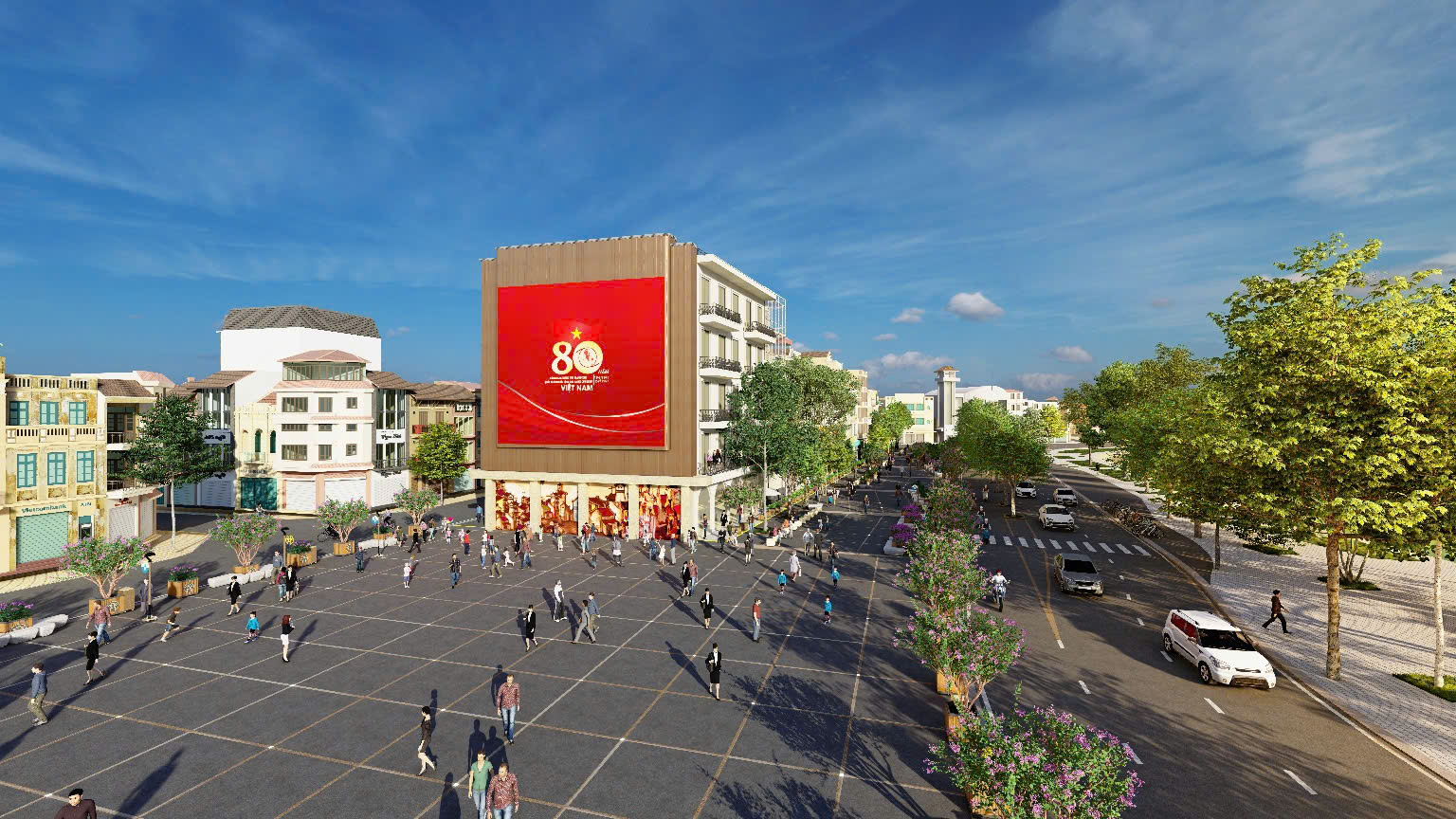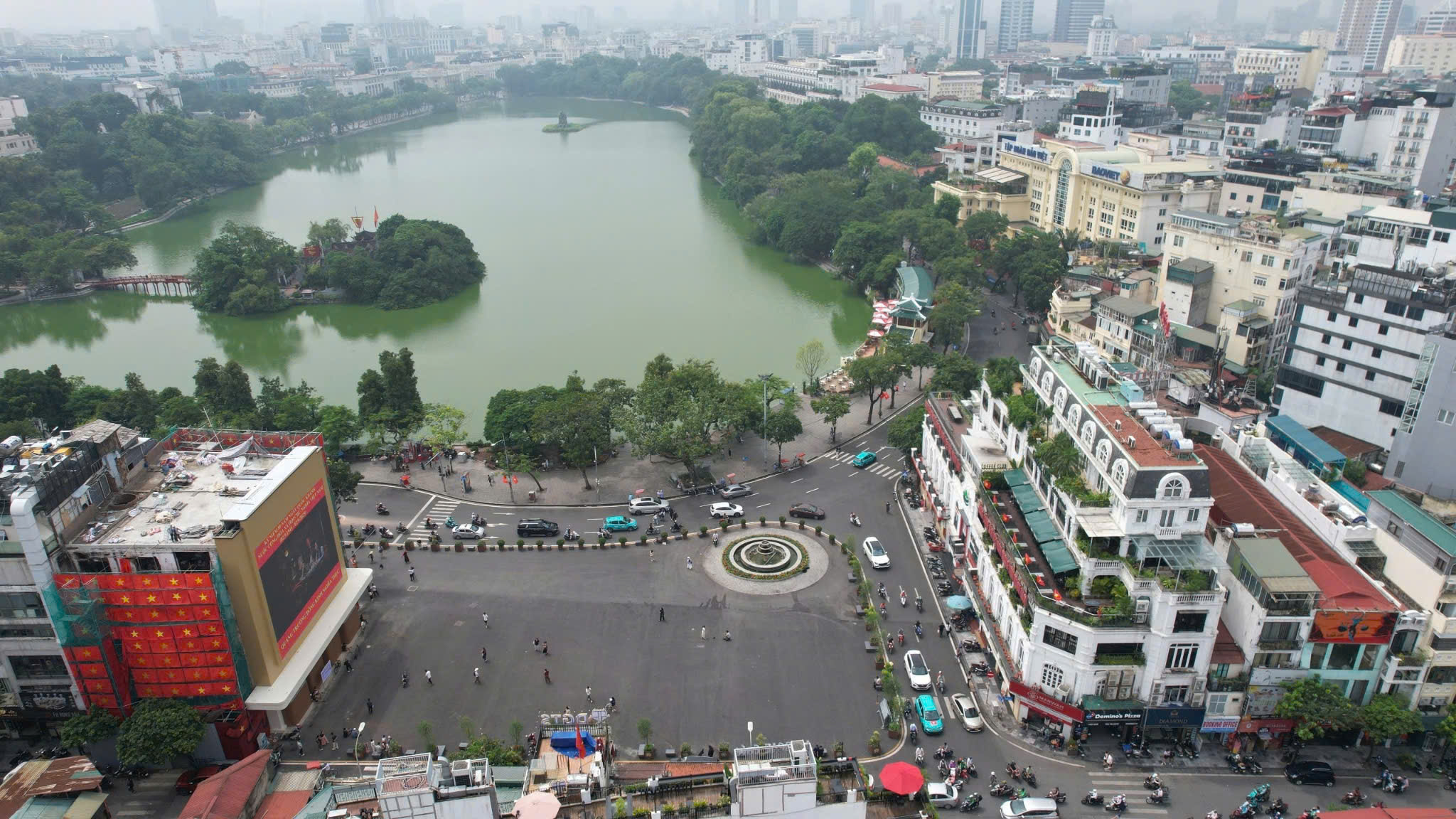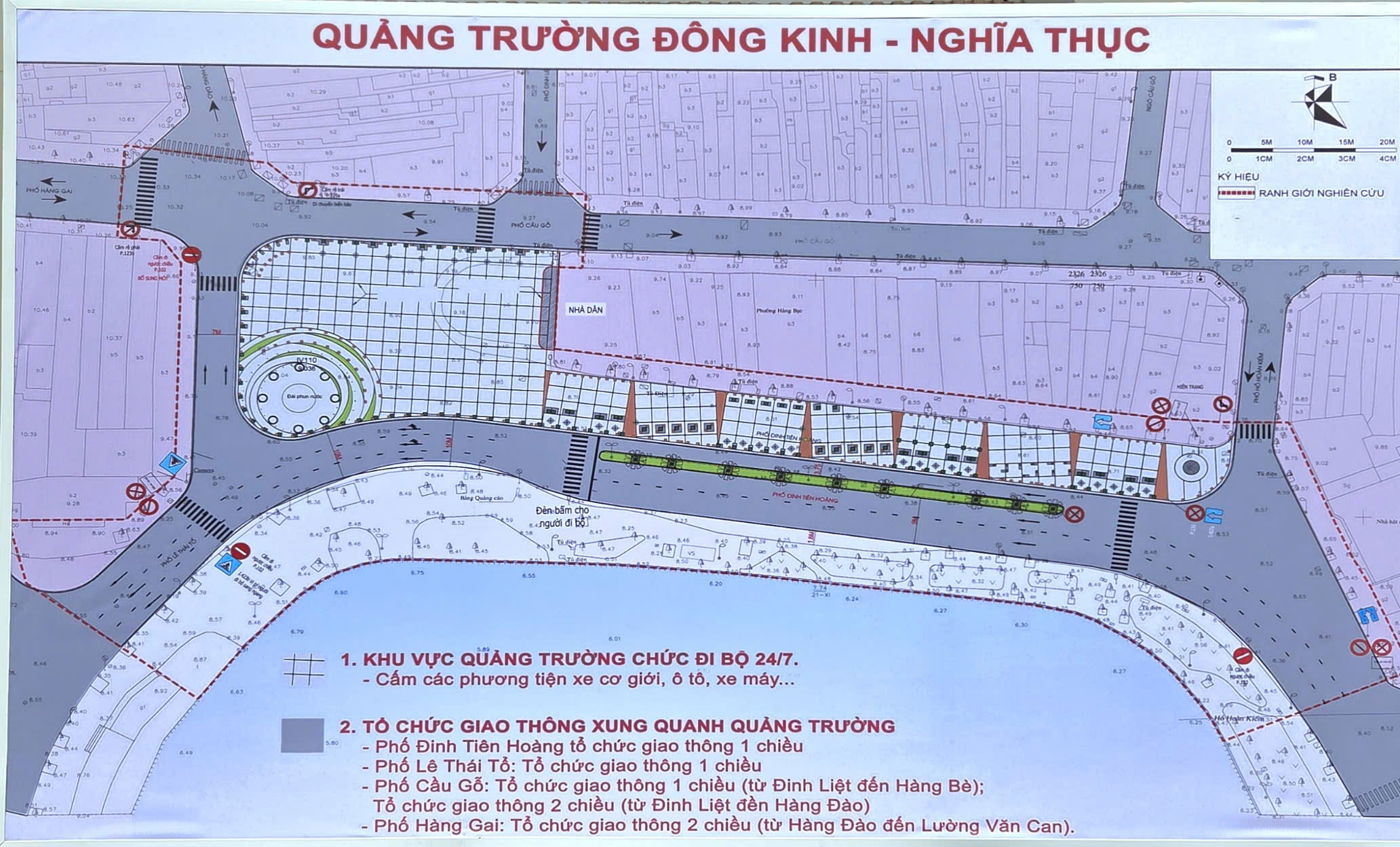The Hanoi Department of Planning and Architecture has approved a two-phase renovation and expansion plan for Dong Kinh Nghia Thuc square in Hoan Kiem district.
Phase one involves demolishing the building at 1-3-5 Dinh Tien Hoang street (the "Shark Jaw" building); renovating the facade of the building at 7-9 Dinh Tien Hoang street to accommodate an LED screen; and improving the facades of buildings along Dinh Tien Hoang, Cau Go, and Hang Dao streets (including removing awnings).
The city will also restore Thuy Ta restaurant to its original architecture, removing makeshift structures and tin roofs to enhance the square's aesthetics. The parking lot and median strip on Dinh Tien Hoang street will be removed, while existing trees will be preserved. Traffic flow will be reorganized, with movable planters added (to be placed near the sidewalk on weekends), and a concrete surface will create a sloped, level square towards Hoan Kiem lake.
 |
Architectural design of Dong Kinh Nghia Thuc square after renovation. Source: Institute of Urban Planning and Architecture (Hanoi Architectural University) |
Phase two will focus on reconstructing the facades of surrounding buildings, paving the square, and constructing a three-level underground space. The first underground level will house cultural and commercial areas, while the second and third levels will be for parking. Vehicle access will be from Cau Go street, near 7 Dinh Tien Hoang street. Pedestrian access to the underground levels will be located around the square.
Demolition of the "Shark Jaw" building began in early June and was largely completed in two months, allowing for renovations to start on 10/8. After about 20 days, the square's initial form emerged, including the LED screen installed at the former "Shark Jaw" building site, renovations to the Hapro building at 7-9 Dinh Tien Hoang street, restoration of Thuy Ta restaurant, and facade improvements along Dinh Tien Hoang, Cau Go, and Hang Dao streets.
The LED screen is not a replacement for the "Shark Jaw" building.
Hanoi selected the architectural plan for the square's renovation. According to Nguyen Manh Cuong, deputy director of the Institute of Urban Planning and Architecture (Hanoi Architectural University), several consulting firms participated, but the Institute's plan was chosen for meeting the criteria, including the timeline. To be ready for the 80th National Day celebrations, a 12m x 17m LED screen was built, framed in pale yellow.
Cuong explained the pale yellow frame evokes the old quarter's architecture and landscape, while the large LED screen symbolizes modernity. "We aim to create a harmonious blend, a space that is neither too old nor too new, embracing both tradition and modernity," he said.
The design also includes an awning under the LED screen, reminiscent of those around Trang Tien street, creating a familiar and friendly feel within the ancient urban environment.
 |
Aerial view of Dong Kinh Nghia Thuc square, taken on the morning of 10/9. Photo: Hoang Phong |
Addressing comparisons between the LED screen area and the former "Shark Jaw" building, Cuong stated the screen is not a replacement but an urban amenity for promotion and showcasing the city's image. "Architecturally, we didn't follow the classical style of the surrounding old quarter, opting for a simplified form, focusing on segments and colors," he said.
Barriers currently shield electrical boxes under the LED screen, which are yet to be relocated. In 3-4 months, when the boxes are moved, the area will be redesigned.
Furthermore, according to Cuong, the entire square's surface will be redesigned, including the arrangement of urban amenities like modular seating and flower boxes that can be flexibly arranged, assembled, and moved for various events.
 |
The proposed traffic plan for the square area is on display under the LED screen. Photo: Vo Hai |
After completing phase one, the Institute of Urban Planning and Architecture will gather public and expert feedback to refine the architectural plan for phase two. The goal is to create a harmonious and meaningful space that meets the expectations of Hanoi's residents and international visitors.
Along with the Dong Kinh Nghia Thuc square renovation, Hanoi is also planning to renovate the eastern area of Hoan Kiem lake, focusing on increasing public and open spaces for the community.
The 12-hectare Hoan Kiem lake, surrounded by Dinh Tien Hoang, Hang Khay, and Le Thai To streets, is a hub for various agencies, businesses, historical sites, and scenic spots, including the Hoan Kiem - Ngoc Son special national relic site and the Ba Kieu temple national relic.
Vo Hai












